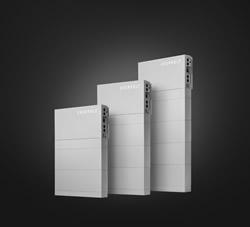Energy Department, NREL Announce New Research Center to Boost Clean Energy Technologies on a Smarter Grid
First Industry Partner, Advanced Energy Industries, Begins Testing Next Generation Solar Inverters
WASHINGTON – The Energy Department and the National Renewable Energy Laboratory (NREL) today announced the Energy Systems Integration Facility (ESIF) in Golden, Colorado, as the latest Energy Department user facility and the only one in the nation focused on utility-scale clean energy grid integration. The facility's first industry partner – Colorado-based Advanced Energy Industries – has already signed on to start work at ESIF, developing lower cost, better performing solar power inverters.
"Our National Laboratories are a national treasure that help America's entrepreneurs and innovators to accelerate the development of new technologies," said Energy Secretary Ernest Moniz. "This new facility will allow for an even stronger partnership with manufacturers, utilities and researchers to help integrate more clean, renewable energy into a smarter, more reliable and more resilient power grid."
"ESIF is an excellent example of the impact that federally-funded research can have on solving national problems beyond the scope of private investment. And, it demonstrates the importance of partnerships among the federal government, industry, and academia," NREL Director Dan Arvizu said. "With NREL's 35-year focus on developing competitive renewable energy and efficiency technologies, we're pleased to take a leadership role in this next frontier of energy research."
Energy Systems Integration Facility – DOE's Newest User Facility
Located at the National Renewable Energy Laboratory's campus in Golden, Colorado, the 182,500-square-foot Energy Systems Integration Facility (ESIF) is the nation's first facility to help both public and private sector researchers scale-up promising clean energy technologies – from solar modules and wind turbines to electric vehicles and efficient, interactive home appliances – and test how they interact with each other and the grid at utility-scale.
ESIF will house more than 15 experimental laboratories and several outdoor test beds, including an interactive hardware-in-the-loop system that lets researchers and manufacturers test their products at full power and real grid load levels. The facility will also feature a petascale supercomputer that can support large-scale modeling and simulation at one quadrillion operations per second.
The Energy Systems Integration Facility is aimed at overcoming generation, transmission, distribution and end-use challenges to support a cleaner, affordable and more secure U.S. energy mix, including research into next generation building technologies, microgrids, energy storage batteries and utility-scale renewable energy. As the cost of clean energy technologies continues to come down, seamless and efficient grid integration will help make these resources and products even more affordable, while giving Americans more control over how they use energy in their homes and businesses.
The Energy Systems Integration Facility is the latest addition to the Energy Department's national network of user facilities that provide nearly 30,000 scientists and engineers each year with open access to some of the world's best instruments and tools, including x-ray sources, accelerators and supercomputers. Corporate users pay the full cost of conducting research and retain their intellectual property and data rights, while users who agree to publish their research results are charged a discounted fee.
First Industry Partner to Develop Next Generation Solar Inverters
As the first industry partner to use ESIF, Advanced Energy Industries is testing its new solar photovoltaic (PV) inverter technology with the facility's utility-scale grid simulators and hardware-in-the-loop systems. Solar inverters are responsible for a number of critical functions within a solar PV system, including converting the direct current output into alternating current for the grid. Advanced Energy's inverter will help support a smarter grid that can handle two-way flows of power and communication while reducing hardware costs.
In the last four years, solar generation in the U.S. has more than doubled, while at the same time the costs of photovoltaic systems have dropped 80 percent. As more and more solar power contributes to the U.S. energy mix, lower cost advanced solar inverters will help usher in an increasingly diverse electricity portfolio, while providing American consumers and businesses with reliable and affordable energy options.
Congress provided $135 million to construct and equip the user facility. The President's FY 2014 budget request includes an additional $20 million for facility operations. The Department encourages utilities, manufacturers, universities and other national labs to fully utilize ESIF's unique capabilities and resources. Find more information on the Energy Systems Integration Facility.
Featured Product

